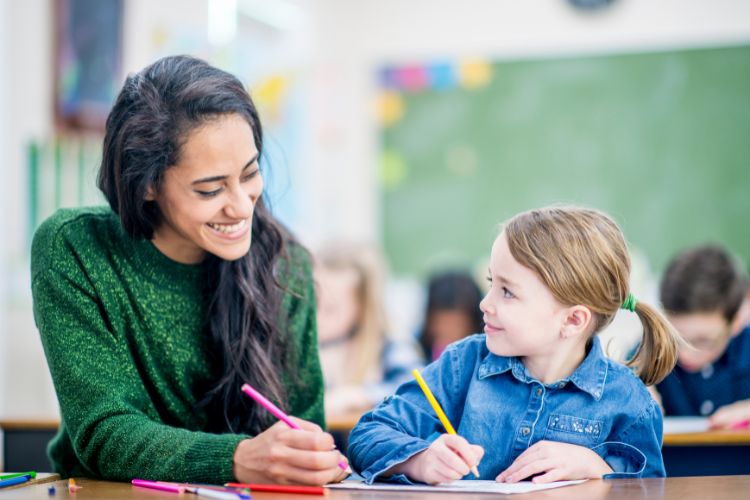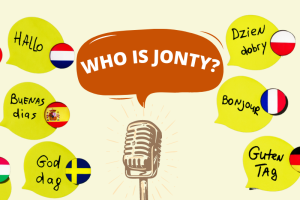Is there a best way to learn a language? Regrettably, the answer is no. Language learning can take place in a variety of ways. What matters most is that structured learning criteria are used.
There are many methods to learn a language: grammar–translation, aural–oral, the silent way, the communicative approach, and more.
Each technique has supporters and detractors, advantages, and disadvantages, and no research shows one method is superior to another.
For over three decades, I’ve tried, failed, and (eventually) succeeded at learning new languages.
I’d love to say I’m a smart guy who figured it all out. But, I think it’s more accurate to say I’m just very persevering. I’ve developed a successful methodology of language learning by trial and error and the process of elimination.
Mine isn’t the only way to learn languages, and it may not necessarily be the best approach for you. But I believe everyone can take something of value away from my experience.
Understand the Conditions of Language Learning Activities
Learning a language involves both deliberate and incidental learning. Both involve repetition, retrieval (recall), different meetings and different uses, visuals, and focused attention.
Effective learning also entails avoiding distractions that make learning more difficult.

What’s important is that there is a balance of learning opportunities across the key principles underlying Guided Immersion’s Five Factor Framework.
It’s also important that the learning conditions of repetition, retrieval, varied meetings, varied use, deliberate attention, and deep processing occur.
The most important things to learn should receive the most attention, with access at the appropriate proficiency level.
This post aims to help learners understand the learning conditions that underpin many recommended language learning activities. The learner should be able to use these activities effectively if they understand these conditions.
1. Repetition
The more something is repeated, the likelier it will be remembered. Repetition works best when spaced out, meaning rather than having all the repetitions happen simultaneously, a reasonable amount of time should separate them.
As a word becomes more familiar, the distribution of repetition practice should be increased, perhaps over several weeks or months. This concept of increasingly spaced repetitions is used by well-designed flashcard programs. When we read, we often encounter spaced repetitions.
2. Retrieval
If the quality of attention is increased for each repetition, the repetition’s effects are amplified. Retrieval is an important and simple way to improve quality.
Retrieval is bringing something a learner has encountered back into present consciousness. For example, after hearing an object’s name, a learner tries to recall that name a few minutes later.
Every successful retrieval reinforces the link between the word form and its meaning—the more successful their retrievals, the better their learning.

If a learner sees a word and its meaning written together, this isn’t a retrieval instance because the learner doesn’t have to recall the word’s meaning.
If they’re about to look up a word in the dictionary they’ve previously studied, then spending a few seconds trying to recall its meaning before looking it up is a good idea for retrieval. That these techniques encourage retrieval is a major reason for using a word or flashcard program.
Learners must first retrieve the word form and then the meaning. Or they must retrieve the meaning and then the word form. There is no set number of repetitions required for learning to occur, but a minimum of eight is recommended, and the more, the better.
3. Variation

Variable meetings and use are another way to improve repetition quality. Varied meetings involve encountering the same word in different forms, contexts, and senses while reading or listening.
Different forms refer to words with different endings, such as plural versus singular or present versus past.
Different contexts indicate that the word appears with a different grammatical function or is connected to words from previous meetings. For example, we may first encounter the word cry in the sentence “The child cried and cried.”
The next time we encounter this word may be as a reporting verb in “‘Stop there,’ he cried.” Different senses indicate the word is used with a slightly or somewhat different meaning still related to its core meaning.
For example, a learner may encounter the word sweet when referring to a taste, and then again when referring to someone’s face. There are different degrees of variation.
The more diverse their encounters with words, the more likely learners are to remember a word.
So far, we’ve looked at various meetings, such as those during listening and reading. Speaking and writing are also examples of varied usage. The more we use a word in different contexts, the more likely we will remember it.
The effects of varied use are stronger than those of varied meetings.
Additional Factors Influencing Learning
So far, we’ve looked at repetition, retrieval, and different types of meetings and usage.
Associating visual images with language items and language use also aids learning, at least for some learners. When we use language to do things, we have visual associations that help us learn.
According to the dual coding theory, things processed visually and linguistically are remembered better than those coded only in one of these two ways.
Yet, pictures can negatively impact memory if they divert too much attention away from the language items to be learned. Deliberate attention is another major factor influencing learning.
How to Apply Learning Conditions to Learning Activities
Because repetition is so important, figuring out how to repeat the same activities multiple times can be beneficial. Whenever possible, this repetition should include retrieval and variation.
Here are some ideas to get started:
- Re-read a course.
- Re-listen to a course. If the course is in electronic form, use a text-to-speech program. Some websites like Project Gutenberg have written and spoken versions of the same text.
- Do linked skills activities. That is, write about previous writing in the language.
- Revisit things from a few days or weeks ago.
How a Teacher Can Enhance the Learning Process
While it is possible to learn a language on one’s own, there are clear advantages to having a teacher.
Let’s examine which activities in the four skills of listening, speaking, reading, and writing, as well as deliberate learning, can benefit from a private teacher.

A teacher can record texts for transcription while students are listening. The learner will receive clear listening input while attempting to understand the language features. A teacher can also assist in developing fluency with numbers, phrases, and useful sentences.
In communication activities that provide practice in both meaning-focused listening and speaking, the teacher can also be a very supportive partner. This is a beneficial lesson opener, especially if the conversation draws on material covered in previous lessons.
In addition to conversation practice, learners can discuss their issues and concerns with the teacher. They can also use the teacher as a source of useful phrases and sentences to gain fluency in elementary speaking.
They can also use a private teacher as a partner in various language-learning activities described in this post.
The teacher can assist students with intensive reading, addressing any reading issues, such as vocabulary and grammar. The teacher can provide feedback on writing and help correct important written texts.
Private teachers are likely to come up with their own lesson plans and ideas of teaching. It’s useful if the teacher can be guided to some degree by the Guided Immersion Five Factor Framework (which we’ll talk about later in these archives).
Sometimes the learner isn’t working with a private teacher but is enrolled in a foreign language class. In that case, it may be beneficial to see if the teacher is willing to construct a portion of the class using a negotiated syllabus.
A negotiated syllabus exists when the teacher and the students agree on how they will spend their class time.

The traditional method of introducing a negotiated syllabus is for the teacher to teach the course for a few days or weeks. Later, they ask the students to recall and list the kinds of things they did in class during that time on the whiteboard.
The teacher then encourages the students to consult with one another and suggest topics to focus on in the coming weeks.
If the teacher draws a blank timetable on the whiteboard, the resulting discussion will be more practical. This visually communicates to the students that their ideas must be constrained by the time allotted for the class.
After negotiating the various suggestions, the teacher implements them over the next week or two, and the negotiation can resume at the end of that time.
Such bargaining ensures that the class activities and content meet the needs of the students. A negotiated syllabus can also provide very useful feedback to the teacher.
A major issue with a negotiated syllabus is that learners are frequently unaware of the full range of possibilities when learning a language. This could be a very useful and informed tool in developing a curriculum.
Not all teachers will welcome students taking an active role in determining what and how they will be taught. However, many will welcome it because it simplifies their job and ensures that the students are satisfied with the classes.
How Necessary Is a Teacher?
A teacher’s most important job is to plan a balance of learning opportunities across the components of Guided Immersion. This ensures that the most useful material is met at each stage of learning.
Learners can do this planning independently, but they must be familiar with the language they are learning. A knowledgeable teacher can greatly assist in this situation.

The teacher’s next most important job is to organize learning objectives. A teacher can play a significant role in selecting and organizing activities that provide these opportunities for communication.
When working one-on-one with a student, the teacher can be a helpful communicator. A teacher can greatly help with several of the language learning activities described in this post.
The teacher can model proper pronunciation and grammatical usage for students to copy, correct errors, explain word and grammar problems, model appropriate language use, and provide useful cultural information.
Overall, a dedicated teacher is extremely valuable when learning a language. A well-informed learner, conversely, can perform many of the ideal teacher’s duties. The Language Learning Secrets archive aims to help students become more knowledgeable about language learning.







